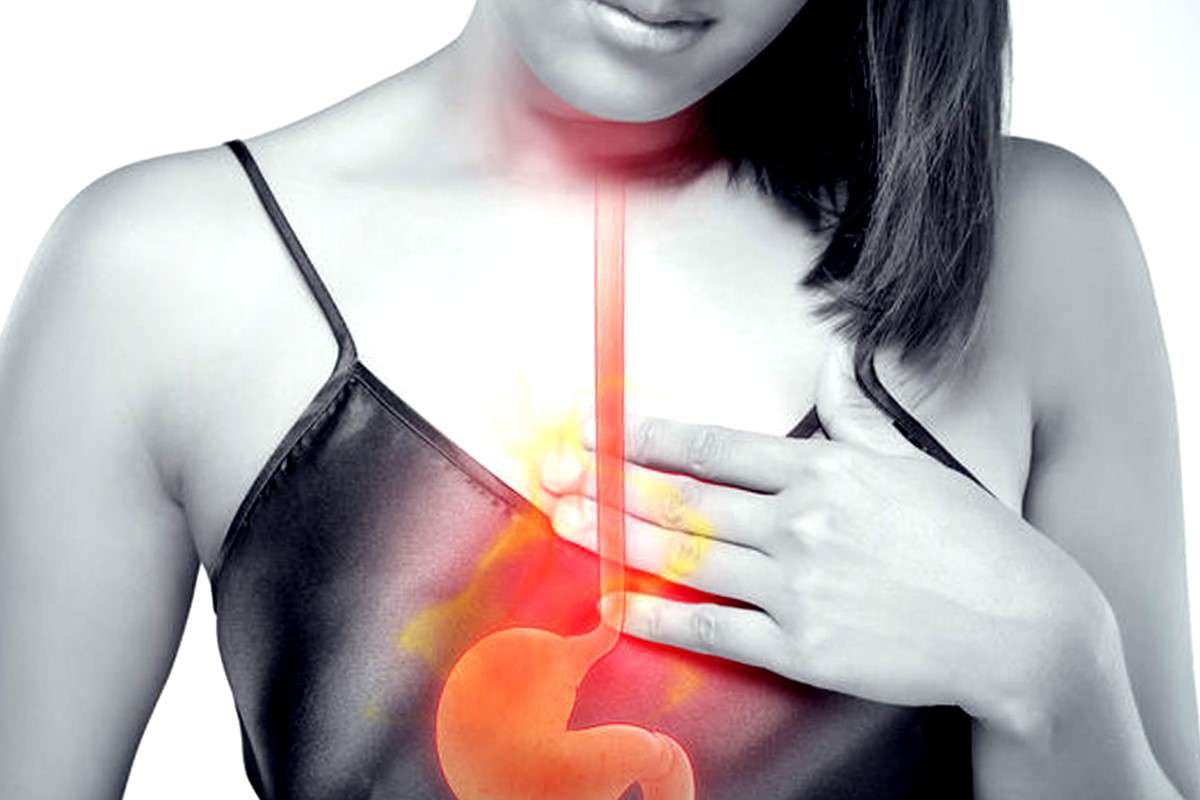
What is gastro-oesophageal reflux and how to treat it
Heartburn, chest pain, and regurgitation are the best-known symptoms of gastro-oesophageal reflux, which is the rising of acid material from the stomach to the oesophagus
According to the Istituto Superiore di Sanità, 1 in 3 people in Italy suffer from it and the likelihood of its occurrence increases with age, although infants and pregnant women also frequently suffer from it.
Gastro-oesophageal reflux: what it is and why it occurs
Gastro-oesophageal reflux is a condition in which stomach contents back up into the oesophagus in such quantity and frequency that the oesophagus is unable to clear and self-clean efficiently.
This occurs when the lower valve (lower oesophageal sphincter) of the oesophagus does not function properly, causing material to back up from the stomach.
Reflux is facilitated by the presence of a hiatal hernia, which is a leakage of the stomach through an opening in the diaphragm (hiatus).
Gastroesophageal Reflux Disease
A little reflux, especially after meals, is to be considered normal, but if there are frequent symptoms or they become chronic, then we speak of Gastroesophageal Reflux Disease (MRGE or GERD in English).
In particular, they are differentiated:
- Gastroesophageal Reflux Disease with oesophagitis (ERD), if there is visible inflammation in the oesophagus (oesophagitis) with possible damage;
- Gastroesophageal Reflux Disease without oesophagitis (NERD), if there is no discernible damage to the oesophagus.
Symptoms
In general, the symptoms of gastro-oesophageal reflux disease can be summarised
A) in typical symptoms, such as:
- burning in the mouth of the stomach and in the chest area (heartburn)
- acid regurgitation;
B) atypical or extra-oesophageal symptoms, such as:
- asthma;
- retrosternal or thoracic pain;
- sensation of discomfort in the neck (oesophageal globe);
- difficulty swallowing (dysphagia);
- sore throat; hoarseness;
- dry or productive cough and wheezing, especially during sleep;
- gingivitis (inflammation of the gums) and erosion of tooth enamel.
Complications of gastro-oesophageal reflux
In some individuals, who also present with significant clinical manifestations, gastro-oesophageal reflux can lead to complications such as:
- ulcers
- stenosis (narrowing) of the oesophagus due to scarring and fibrous tissue;
- a change in the cells of the oesophageal mucosa, called Barrett’s oesophagus, which in some unfortunate cases can lead to oesophageal cancer if reflux persists for many years and is not treated.
Drug therapy
In addition to diet and a correct lifestyle, the classic modality for treating gastro-oesophageal reflux involves the use of drugs (antacids, alginates, proton pump inhibitors, H2-receptor antagonists, prokinetics, etc.) which often have to be used for long periods of the patient’s life and act mainly to
- reduce the amount of acid present in the stomach
- prevent the acid from rising to the oesophagus and protect its mucous membrane;
- improve gastric emptying.
Be careful, however, because these drugs can
- give allergic reactions to those who cannot tolerate their components;
- sometimes prove ineffective or decrease in efficacy over the long term;
- be taken in high dosages to manage symptoms;
- in the long term, lead to potential deficiencies in, for example, iron and vitamin b12 as well as early osteoporosis, if used continuously and in high doses.
Surgery can be a solution to gastro-oesophageal reflux in cases where there is a need to:
- treat the disease when one is unable to take medication;
- reduce the use of drug therapies and their potential side effects;
- treat severe gastro-oesophageal reflux that cannot be managed endoscopically.
The gold standard for correcting a malfunctioning oesophageal valve is fundoplication, performed using various techniques (such as the Nissen, Toupet and Dor) which, by bending the bottom of the stomach, create a 360°, 270° and 180° neovalve.
In some cases, this procedure is also associated with a hiatoplasty to correct a hiatal hernia.
However, the operation, performed under general anaesthesia and lasting from 1 to several hours, may discourage the patient because of
- invasiveness of the procedure;
- need for longer hospitalisation;
- possible post-surgery side effects, such as dysphagia, bloating, flatulence, etc.; and
- possibility of recurrences (10-15%);
- typical risks of surgery, such as bleeding, infection, perforation, injury.
Transoral fundoplication with Esophyx® device
An alternative to surgery for a malfunctioning oesophageal valve is transoral fundoplication with an Esophyx® device: an endoscopic technique that involves bending the bottom of the stomach with a special disposable device that is introduced through the mouth.
This particular procedure follows the same principles as the Nissen surgical method, in which the gastric fundus, i.e. the uppermost section of the stomach, is folded around the oesophagus, creating a new valve that prevents the gastric material from rising, but in this case the plication is performed inside the stomach and no cuts are made.
Read Also:
Emergency Live Even More…Live: Download The New Free App Of Your Newspaper For IOS And Android
Symptoms And Remedies Of A Gastro-Oesophageal Reflux Cough
Gastroesophageal Reflux: Causes, Symptoms, Tests For Diagnosis And Treatment
Irritable Bowel Syndrome (IBS): A Benign Condition To Keep Under Control
Long Covid, Study In Neurogastroenterology And Motility: Main Symptoms Are Diarrhoea And Asthenia
Pinworms Infestation: How To Treat A Paediatric Patient With Enterobiasis (Oxyuriasis)
Intestinal Infections: How Is Dientamoeba Fragilis Infection Contracted?
Gastrointestinal Disorders Caused By NSAIDs: What They Are, What Problems They Cause
Intestinal Virus: What To Eat And How To Treat Gastroenteritis
What Is Proctalgia Fugax? Symptoms, Causes And Treatment
Internal And External Haemorrhoids: Causes, Symptoms And Remedies
Gastritis: Symptoms And Nutrition To Combat It


